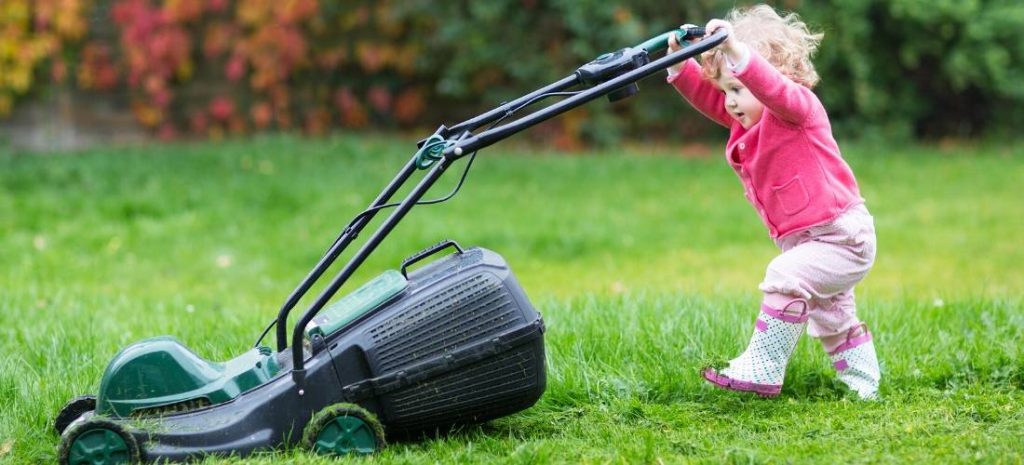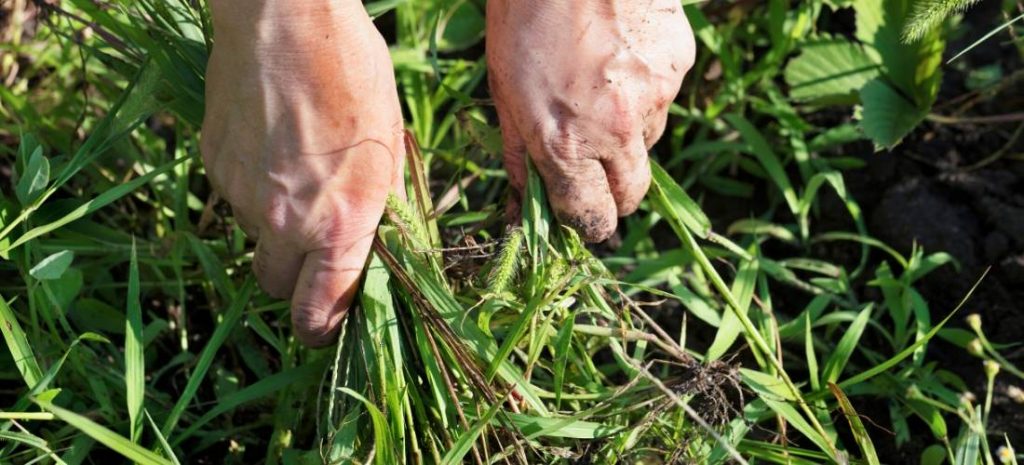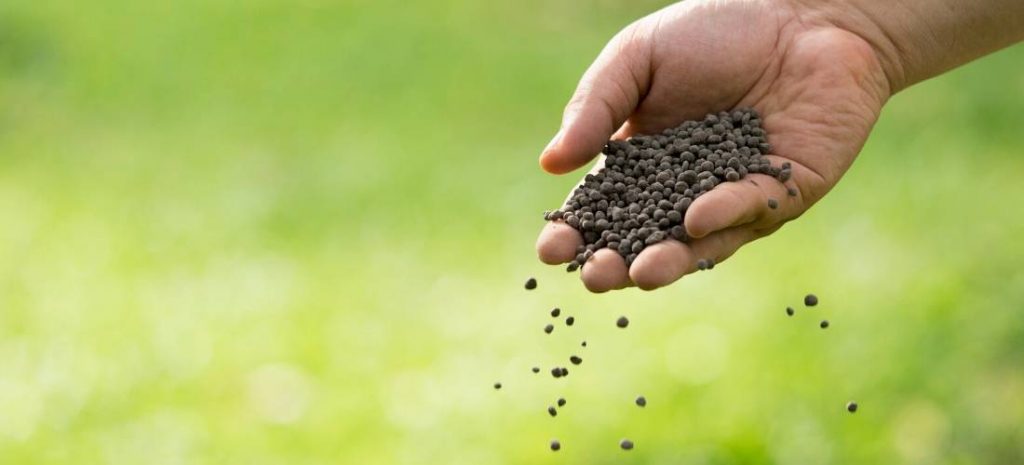The lawn is one of the most overlooked and underappreciated parts of many home gardeners’ yards. A lot of green thumbs instead focus on their perennials and pretty flowers to the detriment of their turf.
In This Guide
- Our Top Lawn Care Tips to Give Your Garden a Greener Glow
- Mind The Way You Mow
- Forget Recycling; It’s Time To Start Grasscycling
- Weeds Be Gone
- Feed Your Turf Right
- Quench Your Lawn’s Thirst
- Take A Deep Breath… And Let Your Grass Do The Same
- Crisp Edges Mean A Crisp Garden
- Scare Away Your Thatch And Moss
- Don’t Forget The Top-Dressing
- Final Thoughts
They must realise, however, how silly perfectly manicured flower patches surrounded by a lacklustre or dully coloured lawn look.

The lawn is the canvas, or the foundation for your gorgeous flower garden, and deserves the same tender love and care as the most beloved bouquet in your plot. It may seem like a needless chore that you’d just as well not add to your docket, but lawn care really won’t be as cumbersome to your daily schedule as you may think.
It’s as simple as adjusting what you’re already doing to take care of your other plants while keeping in mind what your grass needs by getting to know a little bit about it.
To help give your lawn a greener glow, we’ve done our homework and found 9 of the best lawn and garden care tips that are simple enough for any budding gardener to get through.
Mind The Way You Mow
Mowing is one of the most significant parts of lawn and garden maintenance, and with good reason. Many different factors that go into the way you mow have a considerable impact on how glowingly green your grass will be.

Look Daddy I’m Helping!
- Be sure to check your mower regularly to ensure your blade hasn’t dulled. If it has, you better get to sharpening. A dull blade is no good because it splits and hacks at your precious grass, leaving it vulnerable to disease and yellow-tipping.
- Don’t be afraid to mix it up with your mower, as a variety of mowing patterns helps to avoid ‘leaning’ grass as well as ruts. For a smooth, even lawn surface, keep your mowing directions fresh.
- Ideally, you want to mow your lawn when it’s on the drier end. Mowing a wet or soggy lawn leaves an ugly, uneven finish that can damage your greenery as well as your lawnmower if you let enough clumps of damp grass clog your machine. If you must mow when wet, be sure to be diligent about your grass clumps afterwards.
- Know your grass. Cool-season grasses should be mowed in spring and autumn while warm-season grasses will need more mowing attention in the summertime.
- Consider your cutting height; this makes a lot more of a difference than you’d expect. For the first and last cuts of the season, it’s good to keep the mower blade low, while mowing jobs during the summer should have the blade raised higher to allow your glowing greenery to grow longer. Longer grass creates shade, which in turn cuts down on irritating weed growth. Shaded areas also benefit from a higher mowing height since they already struggle to grow, while warm-season grasses are better off with a shorter cut.
Forget Recycling; It’s Time To Start Grasscycling
If you’ve got a big lawn and you don’t know about grasscycling, get ready to jump for joy because the whole point of the process is that you don’t have to do anything! Grasscycling is essentially leaving your clippings on your freshly cut grass so they may serve as a top-of-the-line natural fertiliser, feeding and nourishing your turf. So, mow your lawn, then sit back and relax as your clippings do the fertilising for you.
For best results, you may want to look into a proper mulching blade so you can shred those clippings up into even smaller bits, which makes them easier for the soil to break down. Be sure only to employ grasscycling when your grass is dry, as clumps of wet grass on your lawn can leave loads of damage. Don’t get into grasscycling if you don’t mow the lawn regularly either; the longer clippings can stunt the grass’ growth, which gives you those ugly brown and yellow patches that are the scourge of any proud lawn-owner.
Weeds Be Gone
What is the best way to keep weeds out of your lawn and your life? The answer to that is not any sort of weed-killing agent but maintaining a well-fed lawn of the correct height. Proper lawn height can be a huge help in avoiding them altogether, as the right level of shade on your grass creates an environment in which weeds cannot germinate.
If you find that you cannot avoid other weeds trespassing on your lawn, you can go out and get some weed killer as a last resort. Be sure to use your weed killing agents as part of your general lawn care routine in the springtime. This allows you to aim at the weeds before they have a chance to develop any significant root system.

Identifying the weed you’re trying to eradicate will also help with doing the deed. Depending on which weed you’re dealing with, you might just need a quick, one-off treatment, while others will need constant and prolonged attention to expel from your patch.
Feed Your Turf Right
A lawn that’s well-fed and full of its favourite nutrients is indeed a happy lawn. Providing your yard with the proper nutrients to feed its needs is possibly the best, most crucial garden care tip we could give you. Give that grass what it wants and watch it glow to the emerald green that you’ve been desiring.
Ideal times to feed your lawn with fertiliser are in early spring or autumn. However, it’s crucial to sustain the growth with light feedings in between those times. During the summer, you can mostly hold off on any fertilising, as feeding your lawn too heavily with the mid-summer sun shining is more than likely to induce weed development.

If you simply don’t have the time or resources to fertilise more often, or your lawn is of a more low-maintenance variety, the single best time to feed your lawn, bar-none, is during your autumn lawn care routine. This timing allows the fertiliser to assist in repairing any damage that the summer sun caused to your lawn, which helps to ensure it survives through the frosty winter months.
Also, be sure you know what type of soil and grass you have before putting down any fertiliser, as some fertilisers are a lot more or a lot less effective in different climates and with different types of grass. Using chemicals should always be the last option you try, so be sure to read the instructions carefully when putting these products on your lawn and garden. Be mindful of children or animals who may pass through the chemical-affected areas as well.
Quench Your Lawn’s Thirst
Apart from sunlight and whatever fertiliser you’re using, water is undoubtedly the most critical part of keeping your lawn in tip-top shape. Like many things related to gardening, the amount of watering your particular lawn needs usually depends on the type of soil you have and in which climate you live.
There are no trick answers here though; drier climates usually require more watering, while wetter weather conditions don’t need as much manual watering. Sandier soils will drain more quickly, which means they need to be watered more often. Clay soils, on the other hand, are just the opposite, as too much watering can easily result in a waterlogged lawn that will take a lot of time and effort to remedy.
Generally, your turf will need to get about one to two inches of water every week. If you see that your grass is getting along well without that much water, watering twice a week instead of daily is the best way to go.
The ideal time of day to irrigate your garden is typically in the early morning when the air is nice and cool. The afternoon heat will make the water evaporate more quickly. In contrast, the water usually clings to the blades during an evening watering, which can result in nasty things such as mould and fungal disease.
Take A Deep Breath… And Let Your Grass Do The Same
Letting your lawn breathe, that is, to aerate or de-compact it, is another hugely beneficial practice to undertake for the good of your grass. It’s a process by which you poke holes in your lawn so that water, sun, and fertiliser can more easily reach your soil.
Some lawns benefit more from aeration than others, though. For example, if your yard sees a lot of foot traffic, or the soil feels a bit spongy, aerating can significantly assist in getting the roots of your grass the nutrients it needs. Aerating helps the root system grow stronger and healthier, which makes your lawn thicker, more fertile, and as green as can be.
When it comes to the actual machine doing the job, you’ve got two options: spike aerators or plug aerators. Whereas spike aerators simply put a hole in your soil, plug aerators remove a plug of grass and dirt from the lawn, allowing the ground underneath to get some sun and water.
Plug aerators will yield much better results most of the time, as the spike aerators often serve only to compact your already compacted soil further. Since the spikes aren’t hollow, as they are with plug aerators, they simply push the ground down and to the side, which is not exactly the desired effect.
The ideal time to get your aerating done is during the growing season when your lawn has ample opportunity to heal itself after the soil plugs are removed during the de-compacting. Cool-season grass should be aerated in early spring or autumn, while warm-season grass should be done sometime in between April and June. While it’s not essential to the process, applying a bit of weed killer after aerating is sometimes prudent, as weeds sometimes infiltrate the plugs you left for your grass’ soil.
Crisp Edges Mean A Crisp Garden
After you’ve gotten done with all the essentials, it’s time to think about how you can make your lawn as pretty as it is healthy with a little bit of lawn edging. Untidy lawn edges can ruin the whole aesthetic of healthy, green turf, but have no fear because it’s a problem with a simple solution.
There are a plethora of different tools at your disposal to keep your turf edges crisp and neat. A couple of times a year you can give your lawn a subtle finish with garden tools such as half-moon edgers, long-handled shears, or a spade. Some powered line trimmers that have heads capable of rotating 90 degrees can also sometimes be used to do your edging.
Take your tool of choice, and simply cut and nip at those pesky edges until you get a satisfying, tidy finish for your garden. With the half-moon edger or spade, you can even create a little moat between your turf and flower beds to give your yard an even cleaner, more professional look.
What you want to do is incorporate edging into your lawn care routine so that after every mowing you remember to take a peek at your edges and tidy them up where necessary. Long-handled shears are especially suitable for people with bad knees or backs, as you can quickly get the job done from your feet.
Scare Away Your Thatch And Moss
While they’re not problems quite as pesky or common as weeds, thatch and moss can also come in and cause significant problems for your garden. They’re invasive, and they essentially suffocate your grass by hoarding all the sun, water, and nutrients for themselves. The best way to defeat these two weeds is through a process called scarification.

Thatch is a layer of organic matter that builds up between your soil and all the leaves and twigs left on your turf. Dead leaves, grass, root stems, and branches combine to make thatch, which blocks essential moisture and nutrients from penetrating through the soil to find the roots beneath.
It’s not hard to tell when you’ve got some thatchy sections on your lawn, as the ground will start feeling spongy and the grass itself will start dying from lack of nutrients.
To relieve your grass from the grips of thatch, you’ll need to scarify your lawn. Scarification is a process in which you’re essentially just raking and removing the thatch and mulch from your turf. You can use a regular rake or grab a lawn scarifier, which is much more well-suited for the job.
Mosses, on the other hand, are non-flowering plants that can cause even more problems for your lovely gardens. These plants thrive in areas with a lot of moisture, shade, and poorly tended grass. Clay soils, poor drainage, droughts, and lots of thatch are some of the other conditions that are conducive to the spread of moss.
Be sure to deal with moss infestations right when you discover them because if left to manifest, moss will not stop growing and taking the place of your grass. To get rid of moss invasions, you have to find the issue that’s allowing it to grow, whether it be your clay soil, too much shade, or too much moisture. After you’ve identified the problem, you can limit and monitor it by feeding your grass well and scarifying when necessary.
Don’t Forget The Top-Dressing
Our final lawn care tip is to indulge your lawn in top-dressing. This technique adds a thin layer of soil over your garden, which can help improve the health of your original soil without having any adverse effects on your existing grass.
Top-dressing can be a big help for problem areas such as depressed or low patches, uneven terrain caused by the cold seasons, water runoff, tunnelling rodents, over-packed soil with a lot of foot traffic, water pools, and more. In general, it can help struggling grass blades that are suffering from leaching, neglect, heat, or drought and get them back to their former glory.
This technique is usually employed at the start of the fall or spring seasons, so your grass gets to grow for a few weeks before it’s hit with any extreme heat or cold. Depending on the garden and the gardener, you can top-dress just the small patches that seem to need it, or you can bring in a big load and get your whole yard done.
Final Thoughts
Keeping your lawn looking good is not about changing your entire daily routine because of your garden, but about tweaking your current lawn care routine. These tweaks are usually about knowing your climate and soil type and following the steps for those specifics.
The essential garden care tips are all pretty self-evident: feed, water, and aerate your lawn correctly. Maintaining proper lawn mowing habits is another big lawn care tip that has a considerable impact on the health and beauty of your lawn.
All you need is a reliable lawnmower, a durable aerator, some environmentally friendly fertiliser and/or weed killer, and you’re golden.
Such a small set of tools means there are no excuses for not keeping your lawn healthy and strong. With our lawn and garden care tips, we do not doubt that you can maintain a yard with that perfect emerald green glow.






